The Völklingen Ironworks are located in Völklingen, a German town situated about 14 km from Saarbrücken, not far from the border of France. Völklingen Ironworks is in Germany known as: Völklinger Hütte. The Völklingen Ironworks is the largest sintering-plant in the world. Nowadays, it is the only fully preserved ironworks from the 19th and 20th centuries. The large gas blower hall is the centre of Völklingen Ironworks. Huge gas blowers generated an enormous mass of compressed air for the blast furnaces. The machines were driven by blast furnace gas. The gas blowers are unique in the world. During World War II, thousands of men and women, especially from Belgium, Italy, Luxembourg, Russia and the Netherlands, were employed at the Völklingen Ironworks, most of the workers were victims of hard labour. Völklingen Ironworks was closed down in 1986. Just like Zeche Zollverein, the Völklingen Ironworks is nowadays a location for exhibitions and events. Völklingen is located about 79 km south of the UNESCO World Heritage Site in Trier, about 125 km southeast of Luxembourg and about 125 km northeast of Nancy. Völklingen Ironworks was declared a UNESCO World Heritage in 1994. World Heritage Art: Völklingen Ironworks and Völklinger Hütte
www.werelderfgoedfotos.nl © Copyright World Heritage Photos
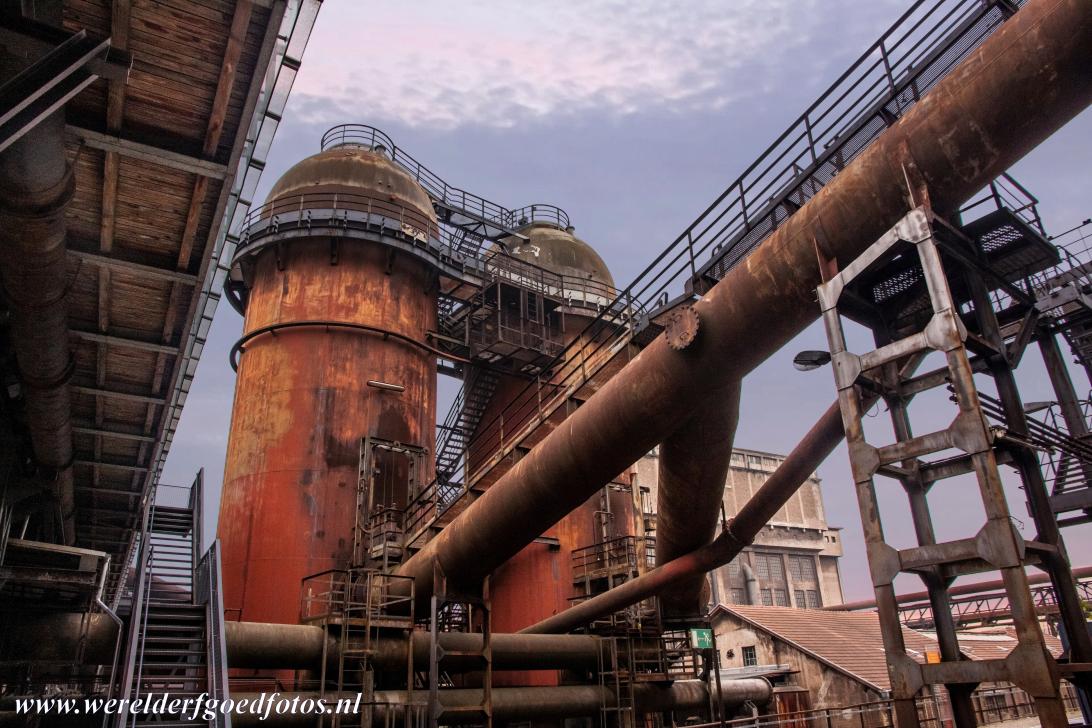
The Völklingen Ironworks was once one of the largest sintering-plants in the world. Now, it is the only fully preserved ironworks from the 19th and 20th centuries. The huge Völklingen Ironworks complex is situated in the German town of Völklingen, on the banks of the Saar River, about ten km west of Saarbrücken. The Völklingen Ironworks was declared a UNESCO World Heritage.

The Völklingen Ironworks was once one of the largest sintering-plants in the world. Now, it is the only fully preserved ironworks from the 19th and 20th centuries. The huge Völklingen Ironworks complex is situated in the German town of Völklingen, on the banks of the Saar River, about ten km west of Saarbrücken. The Völklingen Ironworks was declared a UNESCO World Heritage.
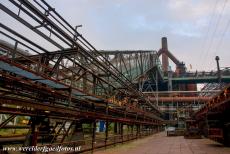
Völklingen Ironworks: The construction of the sintering plant was completed in 1928. For a long time, it was one of the most modern sintering plants in Europe and one of the largest of its time. In the sinter plant, the fine raw materials were prepared for use in the furnace. The Völklingen Ironworks was inscribed on the UNESCO World Heritage List in 1994.
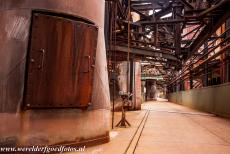
Völklingen Ironworks: Each furnace has iron tapholes and slag tapholes. At the taphole level, the molten pig iron and slag were tapped from the blast furnaces. Slag is the glass-like byproduct of the smelting process. The first blast furnace was started in 1883. Four more blast furnaces were built in the period 1885-1893. The last blast furnace was built in 1903.
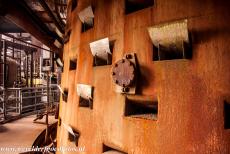
Völklingen Ironworks: Detail of one of the huge blast furnaces, the gas blowers of the Völklingen Ironworks were the first gas blowers in the world powered by blast furnace gas, the gas blowers supplied the blast furnaces with combustion air, for increasing the temperature of the furnaces. In Germany, the Völklingen Ironworks is known as the Völklinger Hütte.
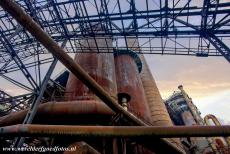
Völklingen Ironworks: This coal silo dates from 1897. The enormous steel coal silo is one of the oldest constructions still preserved at the Völklingen Ironworks. At the end of the 19th century, the Völklingen Ironworks became the largest producer of steel beams in Germany. During WWII, the production was switched to war materials, such as gun barrels and grenades.
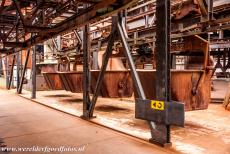
Völklingen Ironworks: The monorail cars ran along the top platform, situated 28 metres above ground level. The monorail cars filled the six blast furnaces with the raw materials. The iron ore came from Lorraine, but during WWI and WWII, the iron ore came from neutral Sweden. These imports from Sweden were very important for the German war industry.
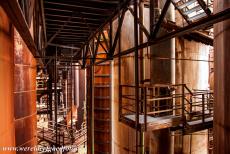
Völklingen Ironworks: During WWII, more than 12,000 men and women from Italy, Luxembourg, Belgium, Russia, France and the Netherlands were employed at the Völklingen Ironworks, most of the workers were victims of hard labour, they worked under harsh conditions. After WWII, the owners of the ironworks were accused of war crimes and sentenced to seven years in prison.
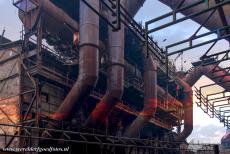
After WWII, the Völklingen Ironworks was confiscated by the French. In 1956, the ironworks returned into the hands of the owners. In 1965, the Völklingen Ironworks employed more than 17,000 men and women, it was the largest number of people ever employed in the Völklingen Ironworks. In 1986, the Völklingen Ironworks was closed down and many people lost their job.
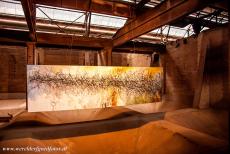
Völklingen Ironworks: The burden shed was built between 1911 and 1913, it was once used to store the raw material. The burden shed is one of the first large reinforced concrete buildings of its kind. The burden shed is measuring 1,000 m². Nowadays, the huge burden shed is a place for exhibitions. Völklingen is located about 79 km south of the UNESCO World Heritage Site in Trier.
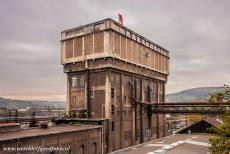
Völklingen Ironworks: The Water Tower was built in the period 1917-1919 and is one of the first manifestations of new industrial architectural design. At 45 metres above ground level, the blast furnace observation platform offers breathtaking views over the Völklingen Ironworks complex and surroundings. The Völklingen Ironworks was declared a UNESCO World Heritage in 1994.
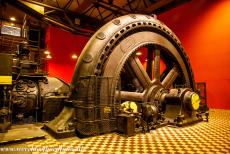
Völklingen Ironworks: The Gebläsehalle is the blower hall. The large blower hall is the centre of the Völklingen Ironworks, huge gas blowers generated an enormous mass of compressed air for the blast furnaces. The machines were driven by blast furnace gas, the gas blowers were unique in the world. Nowadays, the Völklingen Ironworks is a place for exhibitions and events.
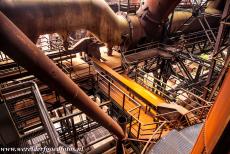
After the Völklingen Ironworks had been closed down in 1986, it was declared an industrial and historic anmonument, it is the only fully preserved ironworks from the peak of industrialisation in the world. Nowadays, the Völklingen Ironworks is a still a fascinating world of iron and steel. There are guided tours, but is also possible to explore the ironworks on your own.
